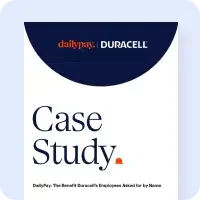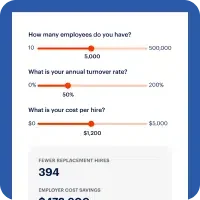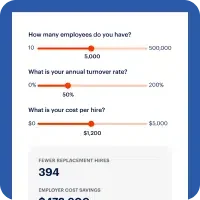As the manufacturing industry embraces clean technology and grapples with a significant talent shortage, the path forward isn’t just about new machinery or processes—it’s about people.
The challenges of attracting and retaining skilled workers, boosting productivity, and reducing costly turnover are all intertwined. The solution? A strategic focus on the financial wellness of your employees.
By modernizing how you support your workforce, you can build a more resilient, engaged, and productive team ready to meet the demands of tomorrow.
Improving employee productivity and efficiency
Investing in employee financial wellness directly addresses a major source of stress that can hinder focus and efficiency.
The majority (78%) hourly workers believe On-Demand Pay would improve their finances.1 By offering solutions that provide a direct connection to employees and their individual needs, companies can boost morale and, in turn, productivity.
Attracting and retaining skilled workers
The manufacturing industry is projected to face a significant talent shortage in the coming years.
In fact, 60% of manufacturers surveyed in the National Association of Manufacturers’ (NAM) third-quarter 2024 outlook cited the inability to attract and retain employees as their top challenge.2
To stand out in a competitive job market, companies must show they are committed to their employee financial wellness. A modern approach to benefits—including financial wellness tools—is a powerful differentiator. It’s about demonstrating a tangible investment in your workforce, making your company more attractive to new talent and building loyalty with existing employees.
Reducing absenteeism and turnover
Employee turnover can be a costly problem, impacting both your bottom line and operational stability.
According to a 2024 survey of more than 300 human resources leaders at US manufacturing companies conducted by the UKG Workforce Institute, 60% of respondents indicate that the average cost to replace one skilled frontline worker ranges from US$10,000 to US$40,000, while 56% say that employee turnover has a moderate to severe impact on their bottom-line finances.3
However, investments in innovation and employee well-being can directly reduce absenteeism and turnover. Employers see 4.07% lower average turnover rate for DailyPay enrolled users versus non-DailyPay enrolled users in the past 12 months, as of July 2025.4
Staying Connected with needs of employees
By giving employees greater control over their finances and a direct connection to the company through an app, you can create a more stable and engaged workforce, ensuring your business is poised for future growth.
The Employment Cost Index for total compensation in manufacturing, which includes employee wages and benefits, has continued to climb in 2024, gaining 3.8% year over year as of September.5 Manufacturers must find ways to lower costs while still providing attractive benefits.
Solutions like On-Demand Pay offer a way to do just that. Empowering employees with greater financial flexibility and providing employers with valuable data-driven insights into workforce behavior. This allows companies to stay ahead of the curve, adapting their strategies to better support their employees and maintain a competitive edge in a challenging and uncertain business climate.
Conclusion
By prioritizing employee financial wellness and embracing innovative solutions, manufacturers can address their most pressing challenges. The data is clear: investing in your workforce through tools that improve financial wellness and provide direct connections to their individual needs leads to a more productive, engaged, and loyal team. This is a smart business decision that helps you attract top talent, reduce costly turnover, and build a competitive advantage.
All information herein is for educational purposes only and should not be relied upon for any other use. The information herein does not constitute the rendering of financial, business, accounting, securities, tax, legal or professional advice by DailyPay. No fiduciary obligation or duty exists or is created, between you and DailyPay. DailyPay does not warrant the completeness or accuracy of any information provided to you.
1 Financial and Mental Health Research by Talker, Commissioned by DailyPay, May 2025:DailyPay, 2020
2 2025 Manufacturing Industry Outlook:DailyPay, 2020
3 2025 Manufacturing Industry Outlook:DailyPay, 2020
4 Internal Database, September 2025:DailyPay, 2020
5 2025 Manufacturing Industry Outlook:DailyPay, 2020
More for Manufacturing
Learn how On-Demand Pay may address top challenges across the industry.












